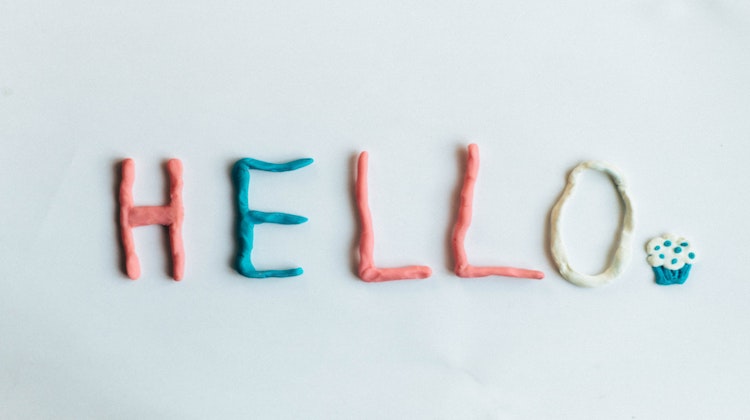“Hello” is probably the first word you learned in English, and it is one of many words and phrases we use to greet someone.
We use greetings every time we meet someone, and there are specific greetings for informal, formal, business, and written scenarios, as well as greetings used on certain holidays.
You may not feel completely confident in knowing which greeting is most appropriate for which scenario, so this article will explain the difference between many common greetings in English, and help you understand which ones you need to know in order to sound more natural in your use of English.
Read on to learn more, and by the end of this article, you should be confident in using formal and business greetings, informal and spoken greetings, and greetings for specific holidays!
Formal and business English greetings
It is very important to know when and how to use formal greetings in English, as it demonstrates professionalism, respect, and politeness to the person you are speaking to.
Spoken formal greetings are used in some business English phrases, e.g. during a job interview, while speaking to your boss, and while speaking to customers; when speaking to a figure of authority, e.g. a bank clerk or a department head at your university; while speaking with service staff, e.g. waiters/waitresses and supermarket staff; and usually while speaking to older people who you don’t know.
In a formal scenario such as these, the appropriate greetings include:
- Good morning/good afternoon/good evening (depending on the time of day; note that evening is considered to begin from around 6 pm)
- It’s a pleasure to meet you/It’s nice to meet you (if meeting for the first time)
- How do you do? (very formal variation of “How are you?”, and only used when meeting someone for the first time)
- Excuse me (when asking for someone’s attention, e.g. a waiter)
As well as the language you use, be prepared to shake hands with the person you’re meeting (it’s good to make eye contact at this point) or, sometimes, to kiss their cheek, although this is less common.
When ending the conversation, it is appropriate to use the following goodbye greetings in English:
- It was a pleasure to meet you/It was nice to meet you
- Have a good day
- Take care
- I look forward to hearing from you soon (specifically at the end of a job interview)
As well as spoken greetings, it is also important to know how to greet someone over email or in a letter. Here is a quick guide to business email writing and letter greetings in English:
- Dear Sir/Madam (if you don’t know the name of the person you’re writing to)
- Dear Whom it May Concern (a very formal greeting used if your email will be sent to a large organization or group of people, e.g. the local council)
- Dear Mr./Mrs./Ms./Miss./Dr./Professor (if you do know their name; keep in mind that if you don’t know if a woman is married or not, it is polite to use Ms. instead of Mrs. or Miss.)
Lastly, here is how to sign-off your email or letter appropriately:
- Yours faithfully (if you don’t know the recipient’s name)
- Yours sincerely (if you know the recipient’s name)
It’s easy to get these two mixed up, so take a moment to commit them to memory!
Informal and spoken English greetings
When speaking with friends, classmates, or colleagues you’ve known for a while, informal English greetings are appropriate and convey a friendly, open, and casual tone.
If you’re uncertain whether the scenario you’re in requires informal or formal greetings, the golden rule is to follow the lead of the person you’re speaking to; for instance, if your colleague greets you with “Good morning X, how are you?”, you will know that they prefer to maintain a professional tone in conversation, but if they greet you with a “Hey, how are you doing?” you will know that they see the relationship as friendly as well as professional.
However, if you are in a position where you have to speak first, and you’re not sure what the recipient will prefer, it’s always safer to choose formal greetings to begin with.
There are many informal greetings, here are some of the most popular:
- Hello/hey/heya/hi (you probably already use at least one of these common terms, but it sounds natural to switch them up from time to time, that’s what native speakers do!)
- How’re things?/What’s been going on?/What’s been happening? (these are all ways of ‘catching up with someone you know)
- You alright?/Alright? (very informal way of saying “How are you?”, so keep these greetings for friends only)
- Good to see you/Nice to see you (these can be used at the beginning and end of a conversation, to express pleasure at speaking with the recipient)
- What’s up guys? (very informal; and remember, the term ‘guys’ can be used with a group of males and females or even just females!)
- Long time no see/It’s been a while (used when you’re speaking with someone you haven’t seen for a while)
As with all languages, your delivery (the way you speak) is a huge factor in how these informal greetings will be received by the recipient. So keep your tone light, soft and friendly and you’re very unlikely to offend anyone! For further tips on improving your English conversation, you can keep on paying attention to our articles.
Different greetings for specific holidays
Now that we’ve covered everyday greetings in English, let’s discuss some greetings that acknowledge a specific holiday or special occasion.
Learning English online, for example, through watching videos helps with learning spoken English even holiday greetings.
Regardless of your level of English, being familiar with popular English holidays will help you gain cultural awareness of the language, and knowing the correct greetings to use will help you feel part of that culture and will allow you to express yourself to friends, family, colleagues, and clients in the best possible way.
Let’s start with the most popular holiday in the English-speaking calendar: Christmas. English Christmas greetings vary greatly depending on the country, here are some of the most popular:
- Merry Christmas/Happy Christmas (Merry Christmas is more popular in the UK than in the US)
- Happy Holidays (a typical greeting in the US; can also be used if you’re not sure whether the recipient celebrates Christmas or not)
- Have a great Christmas and New Year! (used when you are saying goodbye to someone and won’t see them again until the next year)
- I hope you and your family have a wonderful Christmas and New Year (similar to above but for a closer friend or colleague)
Here is a list of greetings you could use in writing for your colleagues or customers:
- Wish you all the best for the festive season and the New Year
- I hope you have a relaxing break over the holidays, and that the new year brings you many wonderful opportunities!
- Wish you a joyful holiday season and a successful new year!
Here are some other popular holidays and the greetings to use with them:
- Happy Easter (if speaking to a child, you may add something like “Did you get lots of chocolate over Easter?” as it is a tradition to give chocolate eggs to children over this period)
- Eid Mubarak (this Arabic term means “blessed feast” and is used to acknowledge the Muslim holy festivals of Eid al-Fitr and Eid al-Adha)
- Happy Halloween (this holiday, celebrated every year on 31 October, is often accompanied by fun costumes and sweet treats)
- Happy Valentine’s Day (a greeting usually saved for your romantic partner, although if a friend or colleague says it to you feel free to respond in the same way)
Lastly, in addition to the above holidays, we all have our own personal celebrations throughout the year: birthdays and anniversaries are often greeted with “Happy birthday/anniversary!” and if someone has something to celebrate, e.g. a new job or house, you can always say “Congratulations!”. If someone you know is going through a process like taking an exam or applying for a mortgage, you can say “Good luck!” If someone has had some bad news, it’s always polite to say “I’m so sorry to hear that” or if you know them well, you might also add “Let me know if there’s anything I can do.” so that they know you’re there to support them.
Conclusion
You should now be able to understand the difference between formal and informal greetings, and when to use each of them. Hopefully, this article has also given you some ideas of new greetings to use, so give them a try the next time you meet someone, it will help your English sound more natural and confident.
I’m Emma, the author of this article, and online English teacher in italki, specializing in teaching writing skills, so if you’d like to learn more about how to write emails, or to develop your writing skills in general, you can book lessons with me.







